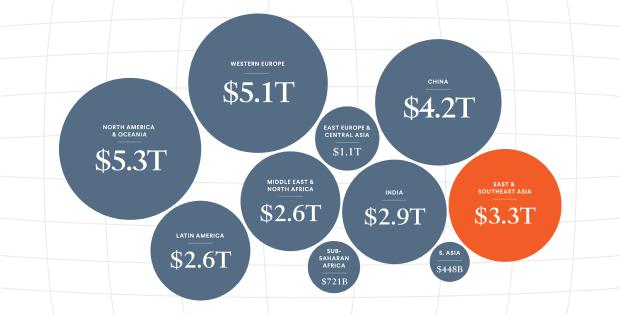Legal Barriers
1
Accessing Institutions
Limitations on women’s legal capacity weaken their decision-making ability. When women cannot independently decide where they want to go on a daily basis, travel, or live, they may face difficulty getting to work or conducting business transactions.
2
Building Credit
When women face constraints, including discrimination and limited credit history, in accessing credit, their ability to open formal bank accounts, build reputation collateral for loans, find employment, and start and grow businesses is impeded.
3
Getting a Job
Legal barriers that affect a woman’s ability to work, including gender-based job restrictions and the lack of workplace protections and leave benefits, inhibit her job prospects, earning potential, career growth, and ability to balance work and family.
4
Going to Court
Barriers in the justice system prevent women from advocating for their interests and enforcing the law. The cost of litigation can discourage poor women from accessing justice, and unequal treatment in court can undermine women’s legal capacities.
5
Protecting Women From Violence
Women can function more freely in societies and the business world when not faced with the threat of violence. Violence against women can undermine women’s careers, ability to work, access to financial resources, and the employment climate.
6
Providing Incentives to Work
Support for mothers—such as tax credits and the availability of childcare for young children—can reduce unequal burdens and provide incentives for women to enter and remain in the workforce, thereby increasing women’s labor force participation.
7
Using Property
Access to property benefits women entrepreneurs by increasing their financial security and providing them with the necessary collateral to start businesses. Legal differences in property ownership and inheritance rights can limit women’s economic prospects.
Moving Toward Reform
Governments around the world are beginning to understand the cost of inequality for women in the workplace, and to take action. Between 2015 and 2017, over 110 countries and territories carried out more than 180 reforms that improved women’s economic opportunities. Governments should also do more to implement existing laws and policies that provide for women’s equality.
110+
Countries
180+
Positive Reforms

Understanding the Economic Stakes
Closing the gender gap in the workforce could add a staggering $28 trillion to the global gross domestic product (GDP). Find out how women’s economic participation reduces poverty and boosts growth.
See the interactive reportGetting a Job
Legal barriers that affect women’s ability to work inhibit their job prospects, earning potential, career growth, and ability to balance work and family. Workplace protections make it possible for women to get and keep jobs. Policies like job-protected parental leave benefit everyone by improving maternal and child health, promoting gender equality, and increasing economic gains.
By the Numbers
113 countries do not mandate equal remuneration for work of equal value.
104 countries restrict the kinds of jobs women can hold.
65 countries restrict women from working in mining.
53 countries force employers to pay 100 percent of maternity leave benefits without government support.
41 countries do not legally prohibit gender-based discrimination in the workplace.
37 countries do not prohibit the dismissal of pregnant workers.
Economic Effects
Where labor laws are equal for women and men, women work—and earn—more. This benefits their families and helps economies grow.
Source: World Bank
Countries could increase their labor productivity by up to 25 percent simply by eliminating legal barriers preventing women from working in specific occupations and sectors.
Source: World Bank
Legal gender differences decrease female labor-force participation and undermine GDP growth.
Source: International Monetary Fund

Country Example
In Russia, Svetlana Medvedeva graduated as a navigation officer and was selected as a ship helmsman. However, she was then told she could not have that job, as Regulation No. 162 lists helmsman as one of the 456 jobs deemed too arduous, harmful, or dangerous for women. Medvedeva took the company to court based on equality provisions in the Russian constitution. Her case was dismissed because the court held that the purpose of the regulation was to protect women’s reproductive health. Her appeals were twice dismissed, until September 2017, when the court found that she had indeed been discriminated against. Nevertheless, the court did not order the company to hire her, and the ban on women ship navigators is still in place.
Source: World Bank
Policy Reform
In countries with laws that encourage women’s employment and ability to work, women work and earn more. Countries should:
Eliminate legal restrictions on women’s employment.
Prohibit gender-based discrimination in employment.
Mandate equal remuneration for work of equal value.
Provide paid parental leave.
Forty-four countries and territories changed laws and processes that affected women’s ability to obtain employment between 2015 and 2017.
No reforms were undertaken between 2015-2017 related to women’s workplace equality.
Increased gender parity
Neutral to gender parity
Decreased gender parity